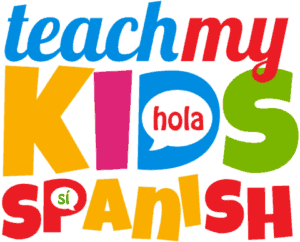
It is a goal of mine to have my children fluently speak multiple languages. When my wife and I were pregnant with our first child, I prioritized figuring out how we could help our daughter speak Spanish and English to the best of our ability. This was one of the questions I asked myself and a question that I saw several other parents ask.
Does speaking two languages to a baby confuse them? Children are not confused by learning two or even three languages at once. In particular, bilingual infants are freely able to distinguish between several different languages and show no evidence of confusion.
Children are readily able to mix languages, even in the same sentence. Languages differ on many levels, so a child is likely able to know the difference between one or the other. So, how are children able to do this?
Why Children are Not Confused By Hearing Two Languages
The idea that children are confused by learning more than one language is a myth. This myth is the result of old research that analyzed poorly designed studies that drew the conclusion that exposing a child to more than one language put them at a disadvantage. This old research prompted some immigrant parents to drop their original language and emphasize only English to their children.
The idea that children are confused by learning two languages is not true. Children are unequivocally not confused by hearing or learning two or more languages at a time.
Infants are able to discern between languages at birth. They are especially able to tell the difference between two languages if they are very different from each other, such as Spanish and Mandarin. Around six months of age, a child is able to detect the difference between similar languages, such as French and Italian.
“From just days after birth, all infants can tell the difference between many languages.”
— Barbara Zurer Pearson, author of Raising a Bilingual Child
So why do parents and teachers still believe that children are confused when learning more than one language?
Adults that are bilingual and fluent in two languages are able to speak whatever language they choose in the moment.
Are bilingual children and infants also able to freely move between two languages the same way as adults? Yes, bilingual children and infants are able to effortlessly move from one language to the next.
People have misunderstood how bilingual children are able to mix words from different languages in the same sentence. People believe that mixing words from different languages is evidence that children are confused. Mixing of words in sentences is known as code mixing, and code mixing is a normal part of bilingual development for children.
Code Mixing by Bilingual Children
So how are children code mixing and when does it take place?
- Children are copying and mimicking the code mixing of the adults around them
- Young bilingual children are limited in the words that they remember or refer to things with their limited resources
- Bilingual children adapt the language they use according to who they are speaking to
- Early code mixing is according to grammar like rules
First, code mixing of young bilingual children is learned from the adults in their communities and they mimick what the adults do around them. If a child’s parents mix words from different languages into sentences, then the child will naturally take the lead from their parents and code mix as well.
Second, children have a limited vocabulary, so if a bilingual child cannot remember a word in Spanish, then they may remember that word in English, or vice versa, taking the path of least resistance. For example, if a child refers to all four-legged animals as “perro” (“dog”), then that child may also refer to cats and horses as “perros”.
Third, if a child’s mother speaks only Spanish to them and the father speaks only English to them, then the child will speak Spanish to the mother and English to the father. This is common among families who choose one parent to exclusively speak a particular language and the other parent to exclusively speak another language. In these cases, the child will have no trouble switching between the languages they speak to their mother and father.
Last, code mixing for children and adults follows grammar like rules. In order to mix words, you have to understand the grammar rules for each language. This is a sign of fluency that shows when and where you can mix languages.
Does Learning Two Languages Delay Speech?
Learning two languages does not cause speech delay in children. Research has shown that bilingual kids begin speaking within the same time frame as monolingual kids. Bilingual kids may speak a little later than monolingual kids, but they typically begin speaking within the normal range of 8 to 15 months. If a child has a speech delay, then their speech will most likely be delayed in both languages.
Children develop language skills at different times. Some bilingual children develop later than others, but some also develop at the same time as monolingual children. If a child has a speech delay, this does not mean that they are confused.
Some bilingual children appear to develop their language skills differently because they have what appears to be a limited vocabulary. Bilingual children are taking in twice the amount of language, so they are learning twice the amount of vocabulary. The number of words that a child may know in the two languages will generally be small, but when combined together it will be roughly the same amount as a monolingual child.
If you are worried about your child’s general language development and believe that it is delayed, check with your pediatrician, a speech therapist or speech language pathologist.
One Person One Language (OPOL) Method for Learning a Second Language
What methods do families use to teach their children a second language?
One of the most popular methods that people use is called One Person One Language (“OPOL”). One Person One Language is where one person speaks one language to a child and the other parent speaks another language. Those people are typically parents, grandparents, teachers or other family members.
Each person will generally speak their native language to a child so that they can teach the child to the best of their ability. Or, if that person speaks multiple languages, they will choose a language that they are emotionally attached to.
OPOL is also effective when the two languages spoken by the parents are different than the language spoken outside the home. For example, with a French speaking father and a Spanish speaking mother, if the family lives in the US, then the child will learn English outside the home in the community and at school. This is also an example of how some children are able to learn three languages at once.
OPOL is also believed to be the best method for teaching a language to a child because there is less mixing of languages. If the parents are disciplined in only speaking their assigned language, then the children receive regular exposure to both languages. This requires a lot of dedication from the parents.
The key to the OPOL method being successful is the parents being consistent in providing regular exposure and not mixing the language. Initially, the kids will use the “wrong language” when speaking to each parent, but over time the kids will speak only that particular language with each parent. Using the example above, the child will only speak French to the father and Spanish to the mother.
Related Questions
If your child is starting at a school where the language is different to the one you speak at home, is there a period where the child may stop talking? In some cases, yes, but do not mistake a child’s silence for confusion. Immersion of a new language is one of the quickest ways to learn a new language. Initially, children listen and take everything in. Once they are comfortable, they will start to speak and catch up with the other children.
Are kids able to become fluent in a third language while they learn two other languages? Children can become fluent in a third language. The key to becoming fluent is the amount of exposure and the consistency of the exposure. The more often a child is exposed to a third language, the more likely a child will become fluent in a third language.
Should children be fluent in one language before learning another? The younger a child learns a language, including a second language, the easier it is for them to learn. Children do not need to be fluent in one language before learning another. This is an unfounded concern for many parents.

